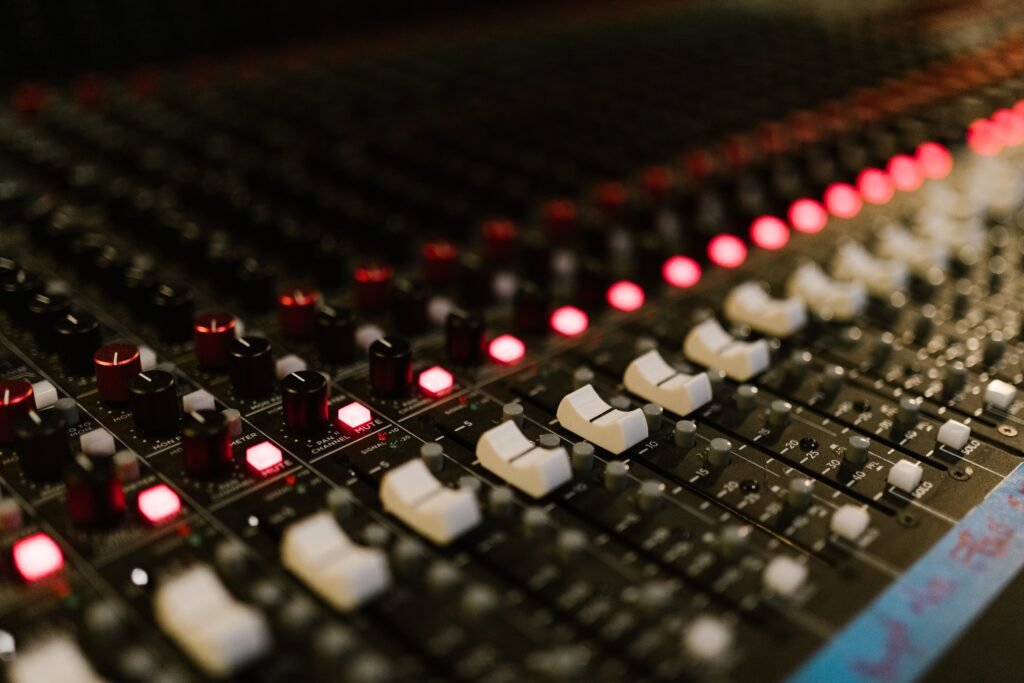Have you ever wondered about the perplexing Circle of Fifths and how it relates to guitar chords? Well, fear not! In this article, we will demystify this musical phenomenon and show you exactly how it can elevate your guitar playing to a whole new level. Get ready to unlock the secrets of the Circle of Fifths and discover its incredible impact on creating harmonically rich and captivating guitar chord progressions. So grab your guitar and let’s dive into the fascinating world of the Circle of Fifths!
Understanding the Circle of Fifths
What is the Circle of Fifths?
The Circle of Fifths is a musical tool that helps musicians understand the relationship between the twelve different tones in Western music. It is a visual representation of the musical keys and their associated chords. The Circle of Fifths is often depicted as a wheel-like diagram, with each key placed at an equal distance from its adjacent keys. This tool is widely used in music theory and composition.
How is it constructed?
The Circle of Fifths is constructed by starting with the key of C major and moving clockwise around the wheel, adding a fifth interval (or seven semitones) to each subsequent key. The order of the keys in the Circle of Fifths is as follows: C, G, D, A, E, B, F♯/G♭, D♭, A♭, E♭, B♭, and F. This sequence represents the natural order of the musical keys, with each key containing one more sharp or flat than the previous key.
What does it represent?
The Circle of Fifths represents the relationship between the different keys and their corresponding chords. The outer ring of the circle shows the major keys, while the inner ring represents the relative minor keys. Each key is connected to its fifth, either clockwise or counterclockwise, forming a chain of perfect fifths. This arrangement highlights the harmonic connections between keys and allows musicians to easily determine which chords are commonly used in a particular key.
Why is it important for musicians?
The Circle of Fifths is essential for musicians because it provides a visual representation of the musical keys and their associated chords. Understanding this tool allows musicians to easily navigate through different keys, identify chord progressions, and compose or improvise with confidence. It also helps in transposing songs, creating harmonic progressions, and better understanding music theory concepts. For guitarists, the Circle of Fifths is particularly relevant, as it can greatly enhance their understanding and utilization of chords on the fretboard.
Guitar Chords and the Circle of Fifths
What are guitar chords?
Guitar chords are combinations of two or more notes played simultaneously on the guitar. They are the building blocks of music and are used in a wide variety of genres and styles. Guitarists frequently use chords to accompany melodies, create harmonies, and add depth to their playing. Understanding and mastering different guitar chords is an essential skill for any guitarist.
How are guitar chords related to the Circle of Fifths?
Guitar chords are directly related to the Circle of Fifths because the chords used in a particular key can be derived from the key’s position on the Circle. For example, the key of C major is at the top of the Circle of Fifths. By moving clockwise around the Circle, we can determine the chords that naturally occur in the key of C major: C, Dm, Em, F, G, Am, and Bdim. These chords form the basis of the key of C major and can be used to create chord progressions within that key.
Why should guitarists learn the Circle of Fifths?
Learning the Circle of Fifths is highly beneficial for guitarists because it provides a logical and systematic way to understand and navigate through different keys. By understanding the Circle, guitarists can easily determine the chords that belong to a specific key, allowing them to create chord progressions, improvise solos, and compose music more effectively. It also helps guitarists in understanding the relationship between chords and scales, leading to a deeper understanding of music theory as a whole.
Benefits of using the Circle of Fifths for guitar chords
Using the Circle of Fifths for guitar chords offers several benefits. Firstly, it enables guitarists to quickly identify which chords are commonly used in a specific key, allowing for easier and more efficient chord progression creation. Secondly, it helps guitarists understand the harmonic relationships between chords within a key, making it easier to create melodic and harmonious guitar solos. Finally, utilizing the Circle of Fifths can improve a guitarist’s ability to transpose songs to different keys, expanding their repertoire and versatility as a musician.

Exploring the Circle of Fifths for Guitar Chords
Key Signatures and the Circle of Fifths
In music, key signatures indicate the number of sharps or flats present in a particular key. The Circle of Fifths provides a visual representation of the key signatures, making it easier for guitarists to understand and identify the key of a song. By familiarizing themselves with the key signatures and their positions on the Circle, guitarists can quickly determine the chords that belong to a specific key.
Relationship between Major and Relative Minor Chords
The Circle of Fifths helps guitarists understand the relationship between major and relative minor chords. Each major key on the outer ring of the Circle is paired with its relative minor key on the inner ring. For example, the key of C major is paired with the key of A minor. By using the Circle of Fifths, guitarists can easily identify the relative minor chords that correspond to the major chords they are playing, allowing for smoother chord progressions and harmonic transitions.
Understanding Modulations using the Circle of Fifths
Modulation refers to the process of changing the key within a musical piece. The Circle of Fifths provides a clear representation of the relationship between different keys, making it easier for guitarists to understand and execute modulations. By identifying the chord progressions within the Circle, guitarists can create seamless transitions between different keys, adding variety and complexity to their playing.
Finding Chord Progressions within the Circle of Fifths
The Circle of Fifths is a valuable tool for finding chord progressions within a particular key. By following the sequence of fifths on the Circle, guitarists can easily determine which chords naturally occur in a specific key. This knowledge enables guitarists to create chord progressions that not only sound harmonious but also capture the essence of the key they are playing in. Mastering chord progressions within the Circle of Fifths allows for more diverse and captivating guitar playing.
Guitar Chord Progressions and the Circle of Fifths
Common Chord Progressions within the Circle of Fifths
The Circle of Fifths can guide guitarists in identifying common chord progressions that are widely used in various musical genres. For example, the progression from the tonic chord (I) to the dominant chord (V) is a popular progression found in countless songs. This progression is easily identifiable on the Circle of Fifths, reinforcing its effectiveness as a tool for creating chord progressions.
Using the Circle of Fifths to create Smooth Chord Transitions
Transitioning between chords smoothly is a valuable skill for guitarists. The Circle of Fifths aids in creating smooth chord transitions by highlighting the relationship between different chords within a key. By selecting chords that are adjacent on the Circle, guitarists can ensure that their chord transitions flow seamlessly, eliminating any jarring or dissonant sounds.
Chord Substitutions based on the Circle of Fifths
The Circle of Fifths also opens up possibilities for chord substitutions within a chord progression. By exploring the chords adjacent to the original chords on the Circle, guitarists can experiment with substituting chords while maintaining the overall harmony of the progression. This allows for creative and unique chord voicings that can add depth and complexity to a guitar arrangement.

Applying the Circle of Fifths in Guitar Playing
Building Chords in a Key using the Circle of Fifths
The Circle of Fifths is a useful tool for building chords in a specific key. By referencing the Circle, guitarists can determine the chords that naturally occur in a key and construct them on the guitar fretboard. This knowledge enables guitarists to create chord voicings and shapes that fit within the context of a particular key, enhancing the overall musicality of their playing.
Identifying Chord Tones and Inversions with the Circle of Fifths
The Circle of Fifths assists guitarists in identifying the individual tones of a chord and understanding chord inversions. By examining the chords within the Circle, guitarists can dissect the structure of each chord and identify its root, third, fifth, and any additional tones. This knowledge allows for more informed and deliberate chord voicings and inversions, resulting in a richer and more nuanced guitar sound.
Simplifying Complex Chord Patterns with the Circle of Fifths
Complex chord patterns can be overwhelming for guitarists, especially beginners. However, the Circle of Fifths can simplify these patterns by providing a logical framework for understanding the relationship between different chords. By breaking down complex chords into their basic components and recognizing their placement on the Circle, guitarists can gradually build their understanding and proficiency in playing more complex chord patterns.
Using the Circle of Fifths to Improve Improvisation Skills
Improvisation is a key element of guitar playing, and the Circle of Fifths can greatly assist guitarists in their improvisational skills. By having a solid understanding of the Circle, guitarists can effortlessly navigate through different keys, identify the chords available in each key, and craft melodic and harmonically pleasing solos. The Circle of Fifths provides a roadmap for improvisation, allowing guitarists to confidently explore different musical possibilities.
Advanced Techniques with the Circle of Fifths for Guitarists
Using the Circle of Fifths for Transposing Songs
Transposing a song involves changing its key to better suit a particular vocalist or instrument. The Circle of Fifths simplifies the process of transposing songs by providing a clear visual representation of the relationship between different keys. By using the Circle, guitarists can easily identify the key they wish to transpose to and determine which chords need to be altered. This makes the task of transposing songs more efficient and accessible for guitarists.
Creating Harmonic Progressions with the Circle of Fifths
The Circle of Fifths is an invaluable tool for creating harmonic progressions that flow naturally and melodically. By following the sequence of fifths on the Circle, guitarists can explore different chord progressions within a key and experiment with unique harmonic combinations. This leads to the creation of more interesting and dynamic guitar arrangements that captivate the listener.
Modal Interchange and the Circle of Fifths
Modal interchange refers to borrowing chords from parallel keys or modes to create harmonic and melodic interest. The Circle of Fifths aids guitarists in understanding and utilizing modal interchange by showcasing the relationship between different keys and their associated chords. By exploring the chords on the Circle, guitarists can experiment with incorporating chords from different keys, adding complexity and depth to their compositions.
Exploring Triads and Seventh Chords with the Circle of Fifths
The Circle of Fifths facilitates the exploration of triads and seventh chords within different keys. By following the Circle, guitarists can easily identify the triads and seventh chords that naturally occur in a key, allowing for more nuanced and informed chord choices. This knowledge empowers guitarists to create chord progressions and arrangements with a greater sense of musicality and depth.

Tips and Tricks for Learning and Memorizing the Circle of Fifths
Visualizing the Circle of Fifths on the Fretboard
To aid in learning and memorizing the Circle of Fifths, guitarists can utilize the fretboard of their guitar as a visual representation of the Circle. By mapping out the keys and their corresponding chords on the fretboard, guitarists can visually identify the intervals between each key and reinforce their understanding of the Circle’s structure.
Using Mnemonic Devices to Remember the Order of Sharps and Flats
The order of sharps and flats in key signatures can be challenging to remember. Mnemonic devices can be used as memory aids to recall the order of sharps (Fried Chicken Goes Down And Eats Birds) and flats (Beadle Enjoys Apple Dumpling, Getcha Fed). By creating memorable phrases or acronyms, guitarists can quickly recall the order of sharps and flats, making it easier to identify key signatures on the Circle of Fifths.
Practicing Scale and Chord Construction using the Circle of Fifths
Regular practice is key to mastering the Circle of Fifths. Guitarists can practice constructing scales and chords within different keys by referencing the Circle. By systematically going through each key and playing the corresponding scales and chords, guitarists can reinforce their understanding of the Circle and internalize the relationships between keys and their associated scales and chords.
Connecting the Circle of Fifths to Music Theory Concepts
The Circle of Fifths is closely connected to various music theory concepts, such as key signatures, chord progressions, and harmonic relationships. By actively seeking to understand how the Circle relates to these concepts, guitarists can deepen their understanding of music theory as a whole. This holistic approach enables guitarists to make meaningful connections between different musical elements and further enhance their overall musicianship.
Resources and Tools to Aid in Understanding the Circle of Fifths
Online Interactive Circle of Fifths Tools
There are numerous online interactive tools available that can assist guitarists in understanding and utilizing the Circle of Fifths. These tools often provide visual representations of the Circle, allowing guitarists to explore the relationships between keys and chords through interactive diagrams. Some recommended online tools include Circle of Fifths generators, chord finders, and key signature quizzes.
Mobile Apps for Learning the Circle of Fifths
In addition to online tools, there are various mobile applications available that focus specifically on the Circle of Fifths. These apps provide comprehensive explanations, interactive features, and practice exercises to help guitarists develop a solid understanding of the Circle and its applications. Some popular mobile apps include Circle of Fifths trainers, chord progression builders, and key signature quizzes.
Recommended Books and Publications
For those who prefer a more in-depth and comprehensive approach, there are several books and publications available that delve into the complexities of the Circle of Fifths. These resources often provide detailed explanations, musical examples, and exercises to aid in learning and applying the concepts of the Circle of Fifths. Some recommended books include “The Complete Idiot’s Guide to Music Composition” by Michael Miller and “The Circle of Fifths for Guitarists” by Joseph Alexander.
Video Tutorials and Lessons on the Circle of Fifths
Video tutorials and lessons are a great way to visually learn and understand the Circle of Fifths. There are many educational channels and websites that offer free tutorials specifically geared towards guitarists. These tutorials often include live demonstrations, explanations, and practical exercises to help guitarists grasp the concepts of the Circle of Fifths more effectively. Some notable video series include tutorials on chord progressions, modulations, and improvisation using the Circle of Fifths.
Common Misconceptions about the Circle of Fifths and Guitar Chords
Myth: The Circle of Fifths is only relevant for classical or jazz musicians
Fact: Contrary to this misconception, the Circle of Fifths is relevant and applicable to all styles and genres of music. Whether you’re a rock guitarist, country guitarist, or even a beginner, the Circle of Fifths can greatly enhance your understanding of music theory and chord progression creation. It acts as a powerful tool for any guitarist looking to expand their musical knowledge and creativity.
Myth: Memorizing the Circle of Fifths is unnecessary for playing guitar
Fact: Memorizing the Circle of Fifths is highly beneficial for guitarists. While it may initially appear daunting, familiarity with the Circle allows guitarists to navigate through different keys, create harmonically pleasing chord progressions, and improvise solos with ease. Memorizing the Circle of Fifths is an investment in a guitarist’s musical growth and can significantly enhance their playing abilities.
Fact: The Circle of Fifths applies to all styles and genres of music
The Circle of Fifths applies to all styles and genres of music as it is a fundamental tool in understanding music theory. Regardless of whether you play classical, jazz, rock, blues, or any other genre, the Circle of Fifths can provide valuable insights into the relationship between different chords and keys. It is a universal concept that transcends genre boundaries and can benefit any guitarist.
Fact: Understanding the Circle of Fifths enhances musical creativity
By understanding the Circle of Fifths, guitarists gain a deeper understanding of chords, keys, and their relationships. This knowledge allows for more informed musical choices, innovative chord progressions, and creative improvisation. Understanding the Circle of Fifths can unlock new possibilities for guitarists and inspire them to explore new musical avenues.
Conclusion
Understanding the Circle of Fifths is paramount for any guitarist looking to improve their playing abilities and expand their musical horizons. From chord progressions and improvisation to transposing songs and understanding key signatures, the Circle of Fifths offers a wealth of knowledge and insight. By utilizing the Circle of Fifths as a guide and incorporating it into their practice routine, guitarists can enhance their musicality, create captivating compositions, and become more versatile musicians. So grab your guitar, explore the Circle of Fifths, and unlock a world of musical possibilities.

Jonse Becker, a seasoned guitarist and music aficionado, founded his blog to share his passion for all things guitar. With over 20 years of experience, Jonse expertly navigates the realms of vintage acoustics and modern electrics, offering readers a rich blend of technical knowledge, history, and industry trends.

